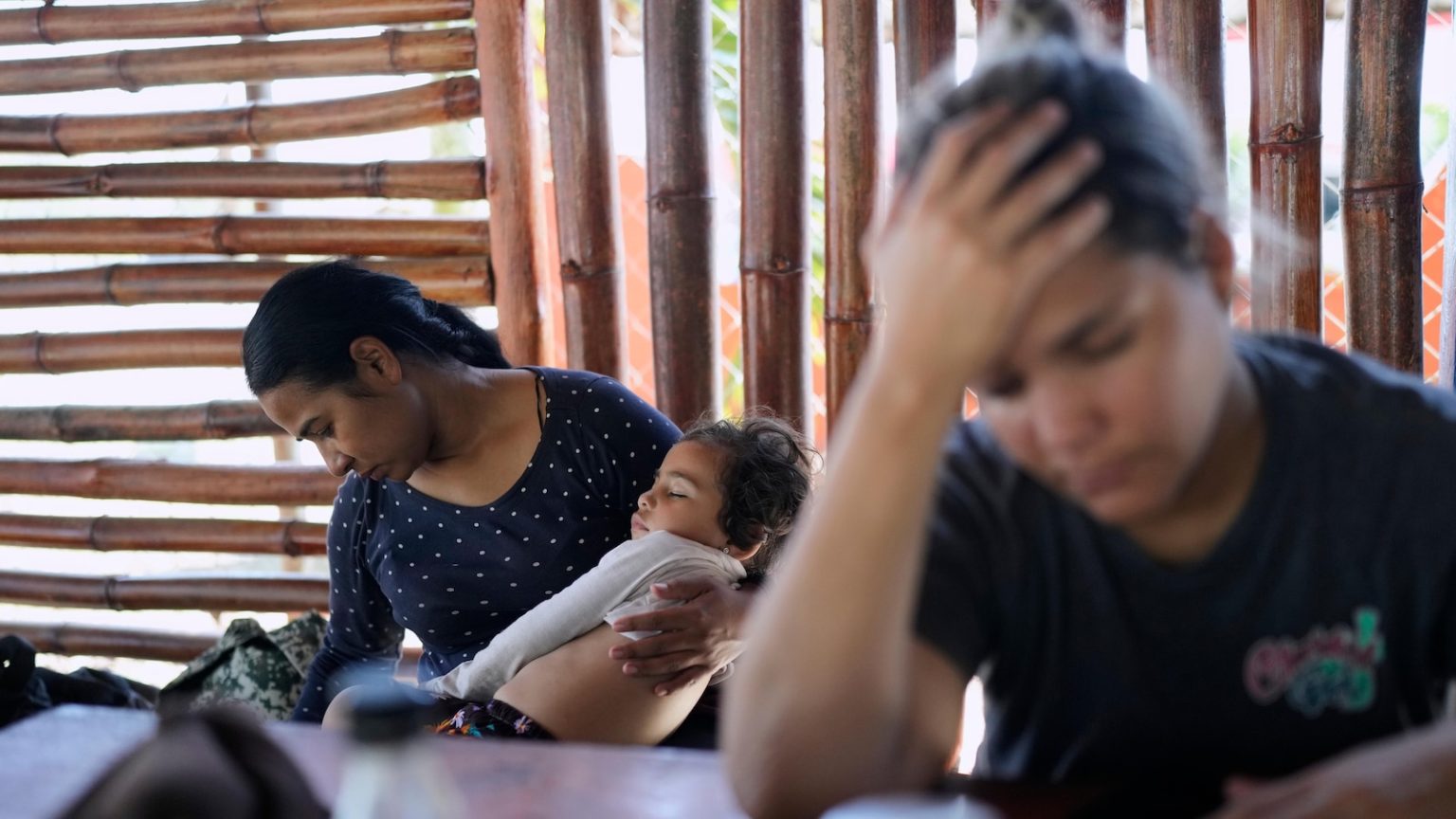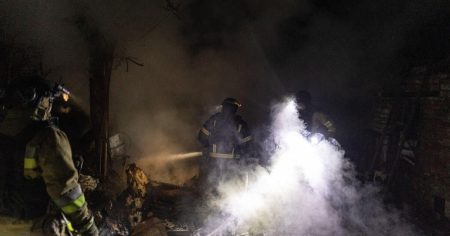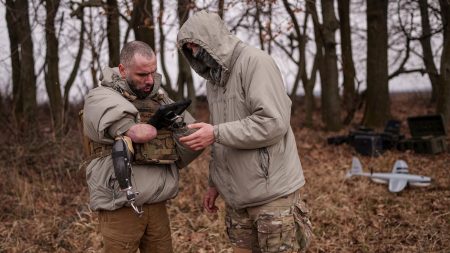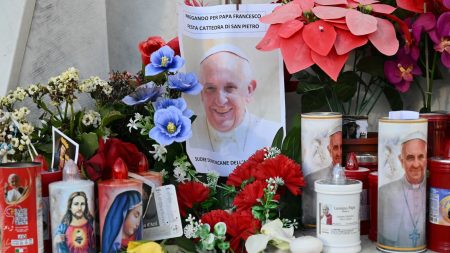Tragedy at Sea: A Devastating End to a Desperate Journey
On Saturday, a tragic incident unfolded off the Caribbean coast of Panama when a boat carrying 19 migrants capsized, claiming the life of an 8-year-old Venezuelan boy. The vessel, which was part of a growing "reverse flow" of migrants heading back to their home countries, was carrying 21 people in total, including two Indigenous Panamanians who were responsible for navigating the boat toward Colombia. Authorities attributed the accident to treacherous sea conditions, which had already deterred two other boats from attempting the journey. Despite rescue efforts by Panamanian border police, only 20 people were saved, and the loss of the young boy has sparked widespread sorrow. "We are deeply sorry about the death of the minor," expressed the border police, highlighting the human cost of this perilous journey.
This heartbreaking event underscores the dire situation faced by migrants who are increasingly forced to reverse their plans to reach the United States. Many of these individuals had Once held onto hope, waiting for months or even years to apply for asylum in the U.S. through the CBP One app introduced during the Biden administration. However, that hope was shattered when former President Donald Trump took office and immediately shut down the program, leaving thousands of migrants stranded and without a clear path forward.
A Growing "Reverse Flow": Migrants Head Back to Their Homelands
The concept of a "reverse flow" of migrants is a stark shift from the usual narrative of migration, where individuals from South America brave dangerous journeys to reach the U.S. in search of a better life. However, the tightening of U.S. immigration policies under President Trump has left many migrants with no choice but to abandon their dreams and return to their countries of origin. This reversal has become particularly evident in countries like Panama and Costa Rica, which serve as transit points for migrants moving north or south.
While Panama has not released official figures on the number of migrants in this "reverse flow," neighboring Costa Rica has reported that between 50 and 75 migrants are traveling south daily. These individuals, many of whom are Venezuelans and Colombians, often find themselves with limited resources and few options for safely returning home. As a result, they are turning to smugglers who promise to facilitate their journey back to their homelands.
The use of small, motorized boats to traverse the Guna Yala archipelago, a chain of hundreds of small islands in the Caribbean, has become a common method for these migrants. Smugglers, who once profited handsomely from transporting migrants northward, are now making smaller but still significant gains by aiding those heading south. However, this route is fraught with danger, as the boats are often overcrowded and ill-equipped to handle the choppy waters of the Caribbean.
Dangerous Journeys and the Allure of the Sea Route
The choice to travel by sea is often motivated by the desire to avoid the perilous Darien Gap, a treacherous jungle that separates Panama and Colombia. The Darien Gap has long been a notorious stretch of terrain for migrants, known for its dense forests, swollen rivers, and lack of infrastructure. Many migrants have lost their lives attempting to cross this region, either due to natural hazards or violence.
In contrast, the sea route through the Guna Yala archipelago is perceived as a safer alternative, despite its own set of risks. The archipelago’s many islands provide a potential haven for migrants, but the journey is far from secure. The capsizing of Saturday’s boat serves as a grim reminder of the dangers involved. Panamanian authorities have attributed the accident to heavy swells in the area, but the root cause lies in the desperation of migrants who feel they have no other option but to risk their lives to return home.
Smugglers and the Exploitation of Vulnerable Migrants
The role of smugglers in this "reverse flow" of migrants cannot be overstated. These individuals, often operating in the shadows, exploit the desperation of migrants by offering passage on overcrowded and poorly maintained vessels. While the profits for smugglers may be smaller than they were during the peak of northbound migration, they continue to capitalize on the vulnerability of those seeking to return home.
For many migrants, the decision to trust smugglers is born out of necessity rather than choice. With limited financial resources and few legal avenues to return safely, they are forced to rely on these often-unscrupulous operators. The risks are immense, as evidenced by Saturday’s tragedy, but the promise of reaching their homelands alive is often seen as worth the gamble.
The Human Cost: Stories of Hope and Desperation
Behind the statistics and headlines, there are stories of individual migrants who are driven by a mix of hope and despair. One such story is that of a Venezuelan couple who spoke to the Associated Press about their decision to take the sea route. They explained that their goal was not to reach the U.S. but to return to their home in the Andean region of South America. Fearing the dangers of the Darien Gap, they opted for the sea route, despite the risks, in the hope of reuniting with their families.
Their story is emblematic of the broader trend of migrants who once held onto the dream of a better life in the U.S. but are now forced to abandon those plans. The closure of the CBP One app under President Trump has left many feeling betrayed and without aafety net. For these individuals, the decision to return home is not an easy one, but it is often seen as the only viable option when faced with the harsh realities of生活 in limbo.
Implications and the Need for a Compassionate Response
The capsizing of the boat off the coast of Panama serves as a stark reminder of the human cost of migration policies that prioritize enforcement over compassion. While the U.S. government’s decision to tighten immigration policies has led to a reduction in the number of migrants attempting to reach its borders, it has also created a ripple effect, forcing Many to return to their homelands under precarious conditions.
The "reverse flow" of migrants highlights the need for a more comprehensive and humane approach to migration. Rather than simply shutting down pathways for asylum seekers, governments must work together to address the root causes of migration, such as economic inequality, political instability, and climate change. Additionally, efforts must be made to ensure that migrants who choose to return home are able to do so safely and with dignity.
In the wake of Saturday’s tragedy, the international community must come together to advocate for policies that prioritize the lives and rights of migrants. Only through a commitment to compassion and understanding can we hope to prevent such heartbreaking incidents in the future.















